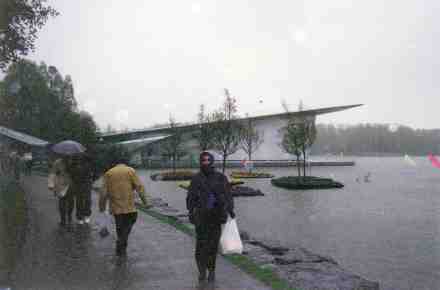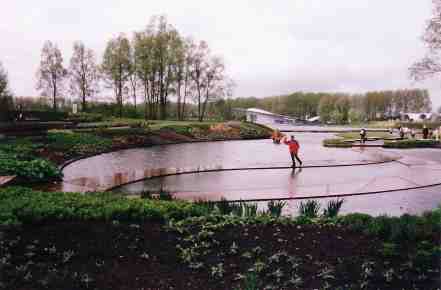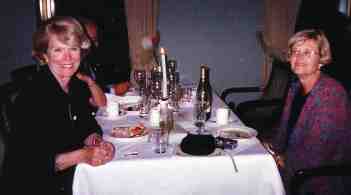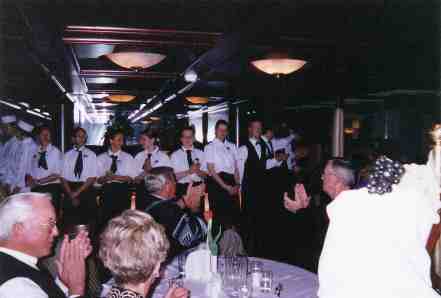Mary, her mom (Helen) and Helen's friend (and next door neighbor) Pat, and I took a Uniworld riverboat tour of the Netherlands to see the tulips. Along the way, we experienced many more Dutch pleasures: Beer, art, and weird science, to name a few.
The photo to the right is of the four of us (Bob, Mary, Pat, and Helen) standing in front of the limo that will take us from Doll and Wayne's house to LAX. After about 11 hours of flying, we arrived at Amsterdam's Skiphol airport where a Uniworld-chartered bus drove us to the ship docked at Amsterdam.
Our first afternoon in Amsterdam was on our own - the cruise didn't really start until dinner that evening. The four of us decided to see the Van Gough (pronounced Van Gok by the Dutch) museum. Getting to the museum involved navigating the Amsterdam tram system. The tram system is wonderful, but the process needed to buy and use individual tickets is not obvious. Of course, the locals all have monthly passes. It's just the tourists that need to buy and use the paper punch tickets. In the end, we enlisted the aid of a pair of delightful elderly Amsterdam women who showed us how to "validate" our tickets using the on-board stamping machine.
At the Van Gough museum, we saw a special exhibit of the work of
Van Gough and Gaugin from the summer they spent together in Arles, France.
The museum had audio guided tours in several languages (including English).
This was my first experience with the device, and I loved it. As I walked
through the museum at my own pace and stopped at the paintings that interested
me, I could punch in the number of the painting and hear an interesting monologue
on the notable aspects of the work.
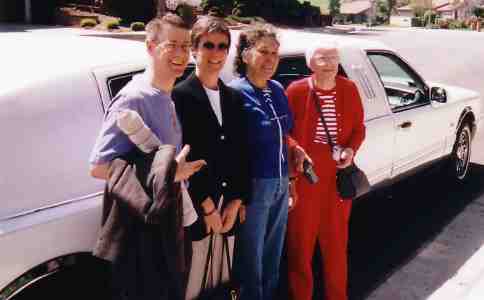
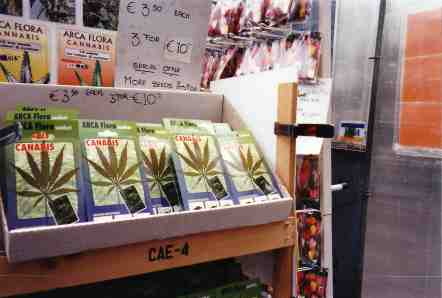
Returning to the waterfront, Bob decided to try the local beer. The barkeep suggested a Pelig (translates to eel) beer. I wrote a few postcards as I sipped the Pelig. The Belgian influence is obvious in the lovely fruit tones. I particularly liked the hearty mouth feel of this unfiltered brew. Bob gives it 4 belches.
At 6:30 the next morning, Mary and went running through the fogged-in
village of Volendam. It was peaceful and pretty. We almost got lost, but made
it back to the boat in time for breakfast.
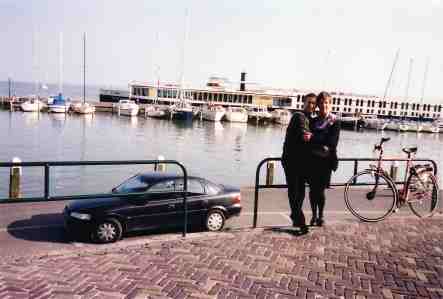

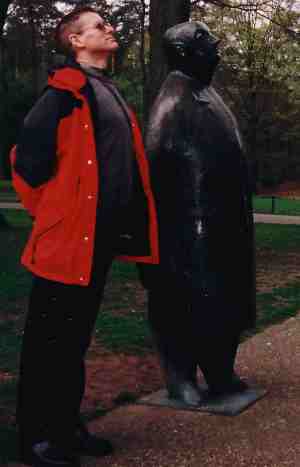

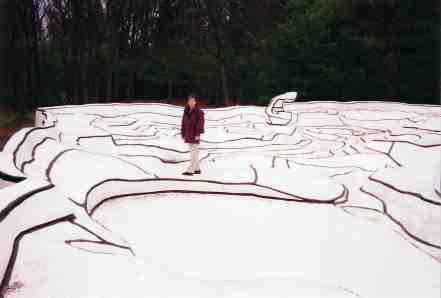
The reason for the windmills is to drive (paddle-wheel) pumps that move water from the collection canals (like the one I'm standing by below) to the outflow canals. The windmills only lift the water about a meter or two, but 3 or 4 hundred years ago, that was enough. Using the windmill lift and the tides, the Dutch could keep draining the land. Everywhere we went, there were canals. More than once, a tourist asked about the "irrigation canals". The guides always explained that the Dutch never have to irrigate. The land is below sea level. The canals are for *removing* the water.
The windmills are just for show, now. The Dutch maintain a huge
system of dikes and around 10,000 electrically driven pumps to keep the water
out. They keep about 50 windmills in this little area as working museum pieces.
Our tour was allowed up inside tone of the windmills. I took pictures, but
they don't really make much sense to someone who hasn't been there. Basically,
you see a lot of wooden gears and shafts. It was way cool.
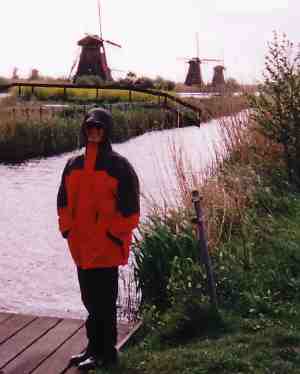

While driving back to the boat from the windmills, we drove past a pole sitting contest in front of a church. There are four poles - the two left-most have people sitting on them (one in a red jacket and one in a blue jacket). We waved. They waved back.

Driving away from Kuekenhoff bulb gardens, the bus driver stopped next to a field so that the passengers could take pictures surrounded by tulips. That's Helen and Mary and millions of tulips.

As you can see, the weather was less than ideal. After pushing our way through the wind and rain for a couple of hours, we finally gave up and took the early bus back to the boat.
